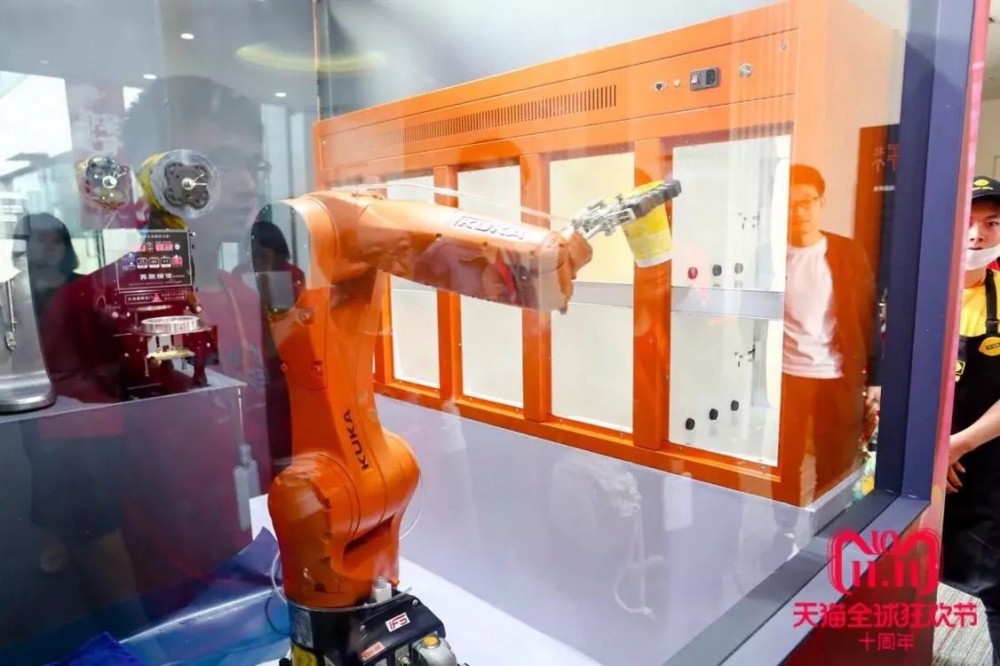Over the past few decades, our country has relied on an adequate supply of labor, which has spurred the rapid economic growth and development, which has also given birth to numerous labor-intensive industries. However, in recent years, with the changes in my country's population structure, the demographic dividend has gradually disappeared, and traditional labor-intensive industries have begun to suffer.
Taking the traditional catering industry as an example, more and more catering companies are facing thorny issues such as year-on-year increase in labor costs, increased personnel mobility, and accelerated loss of service personnel. The development of the industry urgently needs to find a point of integration with new industries. In this case, relying on technologies such as robots, big data, and the Internet of Things to promote the unmanned, intelligent, and informatized catering industry* has become the only way for transformation and development.

The catering industry ushered in a smart upgrade
The catering industry is a traditional service industry, and its long-term operation methods have mainly relied on labor. However, due to the influence of labor factors in recent years, most of the service industries have encountered impacts and challenges in their development, and they are facing new choices and new inflection points for development. not excluded.
According to relevant data, starting from 2012, my country’s young and middle-aged labor force has been declining, the number of elderly people has risen sharply, and the acceleration of aging has burdened my country’s young population with huge pension costs. At the same time, it has also reduced the supply of labor in the catering industry. The rapid development of the Shanghai catering industry eventually led to rising labor costs in the industry, and the Lewis turning point of my country's development gradually appeared.
Of course, labor reduction and cost increase are on the one hand, and on the other hand, the increase in labor value awareness has made repetitive and non-technical work less and less popular. The instability of personnel has become another problem for the development of the catering industry.
From two perspectives, the traditional service model that relies on labor has become an obstacle to the development of the catering industry, and the industry’s transformation and upgrading* cannot be delayed. In recent years, the emergence and rise of "unmanned restaurants" and "smart restaurants" indicate that unmanned, Intelligence is becoming an important direction for the development of the catering industry.
The development status of catering robots
At present, more and more catering companies no longer think about how to expand, but strive to control costs, improve efficiency and increase profits. Under such circumstances, robots have become a new technology that more and more catering people rely on and favor. In "unmanned restaurants" and "smart restaurants", catering robots have gradually become a well-deserved main force for development.
In China, since the first robot restaurant appeared in Hong Kong in 2006*, dozens of restaurants in Guangzhou, Xiamen, Hefei and other cities have used robots. In the past two years, retail giants represented by Hema and JD.com have also begun to deploy robot restaurants one after another. Among them, the Hema robot restaurant "Robot.HE" has achieved break-even within four months of opening. Moon landed in the first robot restaurant.
In addition to e-commerce and retail giants building robotic restaurants and opening terminal applications for restaurant robots, at the front end of the industry chain, there are also a number of established robotics companies and start-ups that are actively engaged in the R&D and production of catering robots. It is understood that there are more than ten domestic companies focusing on catering robots, including many established companies such as Siasun, Pangolin, and Fanxing Technology, as well as many emerging representatives such as Purdue Technology, Udi Technology, Puhua Smart, Qinglang Intelligent, etc. .
From a development point of view, most of the financing obtained by these companies is concentrated in the A and B rounds. The *corner companies have not yet formed. Most companies are seeking opportunities to cooperate with giants in order to gain an advantage in market competition. Among them, Qinglang The cooperation with Haidilao is the obvious representative. In general, the combination with giants has become the main way for many robot R&D companies to achieve their products.
This problem needs to be solved in the future
At present, domestic catering robots are facing development opportunities in three aspects: policy, capital and market. The release of policies such as "Made in China 2025", "Robot Industry Development Plan", and "Intelligent Manufacturing Development Plan" has created a good policy environment for industrial development. At the same time, it has also increased the dividend subsidy for R&D, and promoted the attention and development of the capital market. Support, and the dual demand drive of the catering market and the robot market has driven the rapid prosperity of the catering robot market. In the context of such opportunities, the future development of catering robots has great prospects and unlimited potential.
But challenges and opportunities coexist. While seeing the great development of catering robots, we also need to note that the voice of doubts about robot restaurants and catering robots inside and outside the industry has never stopped. The person in charge of Meituan once said: "The robot restaurant is at the stage of'pseudo-proposition'". Many people think that there is still manual intervention behind the robot, and it is really unmanned and automation has not been realized.
This reminds us that the real landing and mature development of robot restaurants and catering robots need to be more perfect and intelligent in terms of technology and functions. only robots can perform all links such as cooking, delivering, receiving, and serving. All can be independent, and the intelligent upgrading of the industry can be regarded as truly realized.
